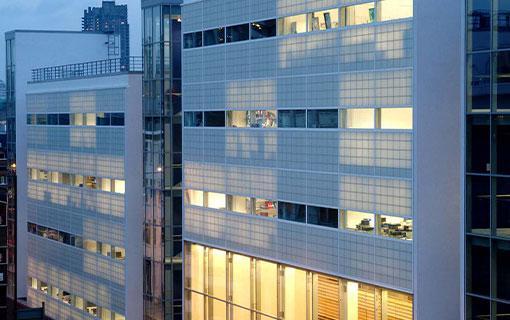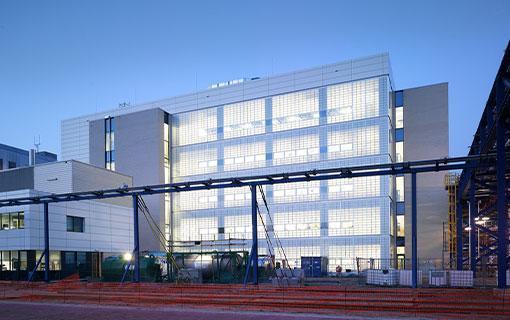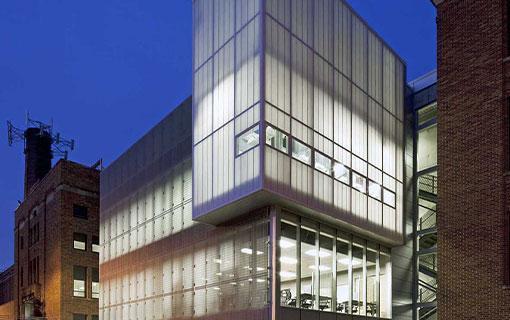Unitized Curtain Wall Systems – Kalwall
Unitized Curtain Walls can do everything Wall Systems can but, with the added benefits offered by factory unitization. In addition to translucent wall panels, designers can integrate fixed and operable windows, opaque panels and fixed louvers. From single-story window walls to multi-story curtain walls, Kalwall Unitized Curtain Walls provide modular daylighting solutions that balance aesthetics, performance, and cost.

Technical Information
Translucent Wall Systems offer many budget-friendly, elegant side lighting solutions. From single story applications to mid-rise construction, Kalwall Wall Systems transform sunlight into glare-free daylight to enhance any space.
Factory Unitization
Large panel units, upto 5' x 35{{aps}}, as assembled and glazed at the factory. They can incorporate both translucent panels, fixed and operable vision glazing, as well as opaque panels and fixed louvers to provide superior fit, especially when compared to systems assembled in the field.
Rapid Installation
Once delivered to the site, these large units can be installed rapidly in order to save both time and money. This approach also allows the building to be enclosed in a fraction of the time compared to conventional curtain wall systems allowing interior work to commence much earlier.
Superior Performance
Once in service, unitized curtain walls offer high levels of performance over the full lifetime of the system without sacrificing design flexibility. Perhaps, that is why architects, contractors, and owners alike can all reap the benefits without compromising their project goals.
Thermally Broken Wall Systems | 2-3/4" (70mm) Standard Thickness
For more demanding climate zones and building types. Thermally-Broken Wall systems provide enhanced envelope performance to meet or exceed the toughest energy codes.
Thermally-broken, interlocking I-beam panel grid core
Thermally-broken aluminum Clamp-tite™ fastening system
U-factors range from 0.23 - 0.05 (1.31 to 0.28 W/㎡K)
Solar Heat Gain Coefficients (SHGC) from 0.36 to 0.04
Visible Light Transmission (VLT) values from 3% to 35%
THERMAL BREAK+STRUCT SYSTEM | BACK FASTENED SYSTEM | CONCEALED FASTENERS | KALWALL 100 (4" SYSTEM)
Standard Wall Systems | 2-3/4" (70mm) Standard Thickness
For certain climate zones and building types, non thermally-broken Wall Systems provide sufficient envelope performance that is both cost effective and meets energy codes.
Standard, aluminum interlocking I-beam panel grid core
Standard aluminum Clamp-tite™ fastening system
U-factors range from 0.53 - 0.18 (3.01 to 1.02 W/㎡K)
Solar Heat Gain Coefficients (SHGC) from 0.65 to 0.10
Visible Light Transmission (VLT) values from 3% to 58%
STANDARD SYSTEM | BACK FASTENED SYSTEM | CONCEALED FASTENERS | KALCURVE | 1-9/16" SYSTEM
Specialty Applications | 2-3/4" (70mm) Standard Thickness
Kalwall offers many product configurations for projects that require special performance criteria to protect from extreme weather events and manage human safety+security
Class A fire ratings available for Wall Systems and Unitized Curtain Walls
Windborne debris protection - tested and certified up to large missile D
Blast resistant systems meet DOD UFC 4-010-01 anti-terrorism force protection
Factory Mutual certified systems: Class I exterior wall FM 4880 & FM 4881
Factory Mutual explosion venting pressure realease systems: FM 4440
WINDBORNE DEBRIS PROTECTION | EXPLOSION VENTING | ANTI-TERRORISM FORCE PROTECTION | FM CLASS I
CLICK TO VIEW PORTFOLIO
Brochures
Finishes
CAD DETAILS
BIM Families
Daylight Modeling Studies:
a complimentary service to optimize your daylighting design
Radiance Illumination
Provides a "snapshot" of daylight levels at a given point in time. Typically, simulations are made to study light levels at the Fall and Spring Equinoxes during the early morning, at solar noon, and late in the afternoon on both sunny and overcast skies anywhere in the world.
Glare Pattern Analysis
Helps to idenify potential problem areas where glare is a concern such as offices, classrooms, athetlic facilities and other spaces where visual acuity is critical. These sutdies are especially useful when designers are specifiers call for a mix of translucent and vision glazing (glass).
Daylight Autonomy
Gives averable daylight values and shows what percentage of the time the space can operate at the target light level with daylight alone. sDA (Spatial daylight autonomy) and ASE (annual sunlight exposure) are all available for LEED® documentation for daylighting credits.
LIKE WHAT YOU SEE?
Connect with us for partnerships, new projects and inquiries.




